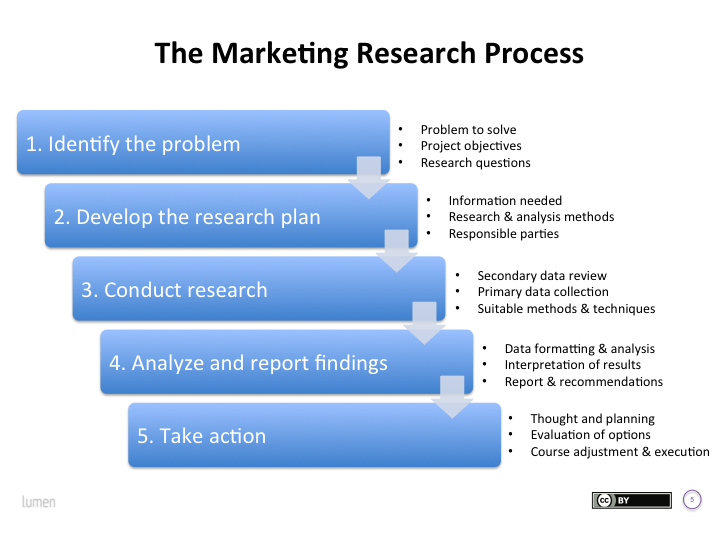Crafting a compelling on-stage persona is crucial for impactful performances. This guide delves into the essential elements of developing a unique stage presence, from understanding your core identity to refining your performance style. By exploring various techniques, from physicality and vocal delivery to the use of visual elements, you will learn how to project your authentic self and connect with your audience on a deeper level.
This comprehensive guide provides a roadmap for creating a distinct and engaging on-stage persona, covering key aspects like self-awareness, performance techniques, and adapting your style to various contexts. It examines how to harness your strengths, values, and past experiences to create a captivating stage presence, whether you’re giving a speech, performing music, or telling a story.
Understanding Your Core Identity

Developing a compelling on-stage persona begins with a deep understanding of your core identity. This involves recognizing your inherent strengths, values, and passions, and how they translate into a unique and engaging performance style. By delving into your personal narrative and past experiences, you can uncover the distinct characteristics that make you, you. This self-awareness is crucial for crafting a persona that feels authentic and resonates with your audience.Identifying your personal strengths, values, and passions relevant to a performance context is essential for building a unique stage presence.
This process involves introspection and careful consideration of your experiences, skills, and interests. What are you naturally good at? What do you find genuinely exciting or meaningful? How can these elements be integrated into your performance to create a distinctive persona?
Identifying Personal Strengths, Values, and Passions
Understanding your personal strengths is vital. Are you a natural leader, a captivating storyteller, or a meticulous observer? Recognizing these qualities allows you to tailor your performance to highlight them. Values are equally important. Do you prioritize honesty, empathy, or creativity?
These values often influence your approach to the material you present, shaping your persona in profound ways. Passions, those areas that ignite your enthusiasm, are the driving force behind a compelling stage presence. They provide the energy and authenticity that connect with an audience.
Articulating Unique Personality Traits
Translating your personality traits into a stage presence requires careful consideration. Are you introspective or outgoing? Do you favor logical reasoning or intuitive insights? These aspects of your personality can influence how you present yourself on stage, whether it’s through posture, tone of voice, or the way you engage with the audience. Honesty and authenticity are key.
Don’t try to be someone you’re not. Instead, focus on highlighting your unique attributes in a way that feels natural and compelling. This authenticity will resonate with your audience.
Importance of Self-Awareness
Self-awareness is paramount in developing a compelling on-stage persona. A deep understanding of your strengths, weaknesses, values, and motivations allows you to craft a persona that feels genuine and believable. It’s not about creating a false identity but rather about recognizing and amplifying the best aspects of yourself in a performance setting. This process is continuous; it’s about ongoing reflection and adjustment to refine your persona over time.
Incorporating Past Experiences and Personal Narratives
Past experiences and personal narratives can significantly inform your on-stage persona. A story from your childhood, a challenging moment you overcame, or a profound insight you gained can all contribute to a compelling and relatable performance. These experiences can add depth and authenticity to your presentation, making your persona more engaging and memorable. They provide a context for your message and connect with the audience on a deeper level.
For example, a performer who draws on their experience of overcoming adversity might portray resilience and determination in a powerful way.
Personality Types and Stage Manifestations
Different personality types can manifest in distinct ways on stage. This table provides a glimpse into how introversion and extroversion, along with analytical and creative tendencies, might shape a performer’s stage presence.
| Personality Type | Potential Stage Manifestation |
|---|---|
| Introverted | Thoughtful and reflective delivery, focused on conveying a message with depth and nuance; might engage the audience through quiet intensity or insightful observations. |
| Extroverted | Energetic and engaging, utilizing expressive body language and a dynamic tone of voice to connect with the audience; might inspire a sense of enthusiasm and excitement. |
| Analytical | Precise and methodical presentation, focusing on structure and logic; might create a sense of intellectual curiosity and careful consideration. |
| Creative | Imaginative and spontaneous delivery, utilizing creativity and experimentation to captivate the audience; might inspire a sense of wonder and unexpected insights. |
Crafting Your Stage Presence

Developing a compelling stage presence is crucial for effectively conveying your unique persona to an audience. It involves more than just words; it encompasses the entire package, from physicality and vocal delivery to subtle cues like eye contact and movement. This multifaceted approach helps connect with the audience on a deeper level, enhancing the impact of your performance.A strong stage presence is not merely about looking good; it’s about embodying your persona, creating a rapport with the audience, and bringing your message to life.
This section will explore practical techniques for developing your physicality, vocal delivery, and use of nonverbal cues to achieve a powerful and authentic stage presence that aligns perfectly with your desired persona.
Developing Physicality and Body Language
Physicality and body language are vital components of stage presence, directly influencing how your persona is perceived. Consciously crafting your physicality allows you to project confidence, charisma, and authenticity. Consider adopting postures that exude confidence, such as standing tall with shoulders back. Use controlled movements to convey specific emotions or ideas. For instance, a slight lean forward might communicate engagement, while a graceful sweeping gesture could signify a shift in perspective.
Careful attention to your body language, whether subtle or dramatic, significantly impacts audience engagement.
Developing Vocal Qualities and Delivery Styles
Vocal qualities and delivery styles play a critical role in shaping your stage presence. Experiment with different vocal tones, speeds, and inflections to match your persona and the desired emotional impact. A calm, measured tone might be suitable for an informative presentation, while a lively, energetic delivery could be more effective in a comedic performance. Practice vocal exercises to improve projection, tone control, and clarity.
Varying the pace of your delivery can also enhance engagement, allowing you to highlight key points and build anticipation. Varying your pitch and volume is crucial for keeping the audience engaged.
Using Eye Contact, Gestures, and Movement
Eye contact, gestures, and movement are powerful tools for connecting with the audience. Maintaining appropriate eye contact fosters a sense of connection and engagement. Use focused, purposeful gestures to emphasize key points, convey emotions, or tell a story. Strategic movement on stage can create a sense of dynamism and maintain audience interest. For instance, a deliberate walk across the stage might signal a transition in thought or a shift in focus.
Controlled movement should enhance, not distract from, your message.
Performance Styles and Corresponding Attributes
Different performance styles require distinct physical and vocal attributes. The table below provides a comparative overview of comedic, dramatic, and informative styles, outlining typical physical and vocal characteristics.
| Performance Style | Physical Attributes | Vocal Attributes |
|---|---|---|
| Comedic | Energetic, playful movements; exaggerated gestures; relaxed posture; occasional use of physical comedy; frequent use of space. | High-energy delivery; varied vocal tones; quick tempo; clear articulation; use of humor and inflection. |
| Dramatic | Controlled, expressive movements; use of space effectively; powerful posture; focused gestures; heightened physicality reflecting emotions. | Varied vocal tones; deliberate pauses; expressive use of pitch; distinct emphasis on specific words; controlled vocal volume. |
| Informative | Confident, composed posture; clear and precise movements; focused gestures; purposeful use of space to emphasize key points. | Clear articulation; distinct pacing; appropriate vocal tone; consistent volume; emphasis on clarity and precision. |
Exercises to Enhance Confidence and Presence
Building confidence and presence on stage requires dedicated practice. Here are some exercises to cultivate these skills:
- Mirror Work: Practice your performance in front of a mirror to observe your body language, vocal delivery, and overall presence. Identify areas for improvement and refine your technique.
- Improv Exercises: Engaging in improvisation exercises can enhance spontaneity, adaptability, and communication skills. This can help you develop your ability to respond to unexpected situations with confidence.
- Record Yourself: Recording your performance allows you to objectively assess your delivery, identify areas for improvement, and track your progress over time. Critically analyze the recording to pinpoint specific areas for growth.
- Practice in front of a small group: Presenting to a small, supportive group can build confidence and refine your performance. Constructive feedback from this group can significantly help you refine your delivery.
Defining Your Performance Style
Developing a unique on-stage persona requires understanding how your performance style shapes your presentation. This involves recognizing the key characteristics of various genres, adapting your persona to different contexts, and understanding how audience demographics and expectations influence your approach. Different performance styles demand distinct approaches to voice modulation, body language, and storytelling techniques. Ultimately, the goal is to align your chosen style with your core identity, creating a consistent and compelling on-stage presence.This section delves into the crucial aspect of tailoring your performance style to achieve optimal impact.
Understanding the nuances of different genres and roles, coupled with an awareness of your audience, allows for a dynamic and engaging presentation. Furthermore, it examines the successful strategies employed by established performers to create distinctive on-stage personas.
Key Characteristics of Performance Genres
Different performance genres, such as storytelling, presentations, and musical performances, demand distinct approaches to on-stage presence. Storytelling, for instance, often emphasizes a captivating narrative voice, engaging anecdotes, and an emotional connection with the audience. Presentations necessitate a structured delivery, clear articulation of ideas, and visual aids to support the message. Musical performances require a strong connection with the music, a compelling stage presence, and an ability to evoke emotions through movement and expression.
Adapting Your Persona for Different Contexts
The same persona may need adjustments depending on the context of the performance. A persona suitable for a humorous stand-up routine may not translate effectively to a solemn speech. Consider the event, the audience, and the message to be conveyed. An activist, for instance, might adopt a more assertive and passionate tone in a protest rally, while maintaining a persuasive and logical approach during a town hall meeting.
Musical performances often involve an expressive persona, whereas a presentation might necessitate a more authoritative and informative one.
Comparing and Contrasting Performance Roles
Comparing and contrasting roles such as a storyteller, an activist, and a comedian reveals different approaches to crafting a unique persona. A storyteller often relies on vivid imagery, evocative language, and a calm, measured delivery to immerse the audience in the narrative. An activist, on the other hand, often uses a more passionate and forceful tone, advocating for a cause with conviction.
A comedian, conversely, employs humor, wit, and often a playful persona to engage the audience. These roles showcase the importance of adapting your approach to suit the nature of the performance.
Influence of Audience Demographics and Expectations
Understanding the demographics and expectations of your audience is crucial in developing a suitable persona. A younger audience might respond well to a more energetic and engaging style, while an older audience might appreciate a more thoughtful and experienced approach. Similarly, an audience expecting a formal presentation will respond differently to a performer adopting a casual, conversational tone.
Cultural backgrounds and expectations also significantly impact audience reception.
Examples of Unique On-Stage Personas
Numerous performers have established distinct on-stage personas. For example, Stephen Fry, known for his wit and intellectual curiosity, uses a relaxed and engaging manner in his storytelling, creating a welcoming atmosphere for his audience. Conversely, Malala Yousafzai, an advocate for girls’ education, projects a determined and inspiring persona, embodying her unwavering commitment to her cause. These examples demonstrate how different performers utilize their unique traits and experiences to create distinctive on-stage presences.
Refining and Practicing Your Persona

Developing a compelling on-stage persona is not a one-time event; it’s an ongoing process of refinement and practice. Consistent rehearsal and feedback are crucial for honing your performance style and ensuring your persona resonates with the audience. This involves adapting to audience reactions, maintaining authenticity, and managing any stage fright that might arise.
Rehearsal and Feedback
Effective rehearsal is vital for solidifying your on-stage persona. Regular practice allows you to internalize your character and refine your delivery. This process is not merely about memorizing lines; it’s about embodying the persona. Rehearsals should be more than simply running through the material. Incorporate techniques like role-playing with a partner or recording yourself to gain objective insights into your performance.
Crucially, seek feedback from trusted mentors, colleagues, or friends. Constructive criticism, even if challenging, is invaluable in identifying areas for improvement.
Adapting to Audience Response
Audience engagement is a key component of successful performance. Pay close attention to audience reactions during your practice sessions and performances. Are they engaged? Are there moments where the energy flags? Observe their nonverbal cues – smiles, nods, or expressions of confusion.
This real-time feedback provides valuable insights into how your persona is received. Adapt your performance style accordingly. If the audience seems unengaged, try a different approach or a humorous anecdote. If they are responding positively to a particular element, build upon that. The ability to adapt is a sign of a strong performer.
Maintaining Authenticity
Authenticity is paramount to a strong on-stage persona. While adapting to audience response is important, don’t sacrifice your core identity. Your persona should be a reflection of your unique qualities, values, and experiences. It’s about being true to yourself while still creating a distinct stage presence. This means avoiding forced or unnatural behaviors that feel disingenuous.
Managing Stage Fright and Nerves
Stage fright is a common experience for performers. It’s important to acknowledge it and develop strategies to manage it. Techniques like deep breathing exercises, visualization, and positive self-talk can significantly reduce anxiety. Remember that your persona can also be a tool for managing nerves. Engage with the character; it can help you ground yourself in the moment.
For example, if your persona is energetic and outgoing, channel that energy to project confidence. Finding ways to connect with your persona can transform stage fright into a source of focused energy.
Challenges in Maintaining a Consistent Persona and Strategies for Overcoming Them
| Potential Challenge | Strategies for Overcoming |
|---|---|
| Inconsistency in delivery due to nerves | Practice relaxation techniques, such as deep breathing and visualization, before and during performances. Rehearse extensively to build confidence and familiarity with the material. |
| Difficulty adapting to different audiences | Observe audience reactions during rehearsals and performances. Study different audience types and their expectations. Develop multiple persona variations for diverse audiences. Be adaptable. |
| Loss of authenticity while adapting to audience response | Maintain a clear understanding of your core identity. Remember the essence of your persona and use it as a guiding principle. Avoid compromising your values or beliefs. Focus on creating a connection with the audience through genuine expression. |
| Lack of feedback for improvement | Seek out constructive criticism from trusted mentors, colleagues, or friends. Record yourself performing to identify areas for improvement. Attend workshops and masterclasses to learn from experts. Actively participate in the feedback process. |
Visualizing and Communicating Your Persona
Creating a strong on-stage persona extends beyond words and actions; it encompasses the entire visual experience. Visual elements, carefully chosen and orchestrated, can significantly amplify the impact of your persona, fostering a deeper connection with the audience. This section delves into the power of costumes, props, lighting, sound, and set design in crafting a compelling and unforgettable stage presence.Understanding how to effectively leverage these elements is crucial to achieving a harmonious blend of your internal persona and its external manifestation.
This approach allows for a more complete and impactful communication of your character to the audience.
Utilizing Costumes and Props
Effective use of costumes and props is fundamental to conveying a specific persona. Costumes can establish the character’s personality, social standing, and even their emotional state. Props can enhance the narrative, provide context, and underscore the character’s role. Consider how a simple cane might suggest authority or a tattered cloak might imply hardship. The careful selection of costumes and props can create a vivid and memorable visual representation of your character.
- Costume Selection: The choice of costume should reflect the persona’s background, personality traits, and the overall theme of the performance. A regal gown might signify a character of high status, while a simple tunic might suggest a commoner. Consider the color palette, textures, and patterns in the costume, as these elements can subtly communicate emotions and create a powerful visual impact.
- Prop Functionality: Props should not only be aesthetically pleasing but also serve a functional role in the performance. A book might represent knowledge, a sword might signify strength, or a musical instrument might evoke emotion. The practical application of props can enrich the storytelling and deepen the audience’s engagement with the character.
Leveraging Lighting, Sound, and Set Design
Lighting, sound, and set design play crucial roles in setting the atmosphere and reinforcing the persona. They can subtly shift the mood and create a specific ambiance that complements the character. The careful interplay of these elements can greatly enhance the audience’s perception of the character.
- Lighting Impact: The use of spotlights, shadows, and color washes can dramatically alter the mood and atmosphere of the performance. Soft, warm lighting might evoke intimacy, while harsh, dramatic lighting might signal danger or intensity. Lighting can be strategically employed to highlight specific elements of the performance and enhance the character’s presence.
- Sound Design: Sound design, including music, sound effects, and even the use of silence, can greatly influence the audience’s emotional response. A dramatic score might accompany a heroic moment, while ambient sounds might build suspense or create a specific atmosphere.
- Set Design: The set design should reflect the character’s environment and personality. A grand castle might be appropriate for a royal character, while a humble cottage might suit a peasant character. The set should serve as an extension of the character’s persona, enhancing the narrative and enriching the overall experience for the audience.
Employing Storytelling and Metaphors
Metaphors and storytelling can further communicate the persona, using symbols and imagery to create a deeper understanding of the character. A simple gesture or a carefully chosen prop can act as a metaphor, conveying complex ideas and emotions.
- Symbolic Representation: Incorporating symbolism in your costume or props can create a profound connection with the audience. A feather might symbolize freedom, a crown might represent power, or a broken object might signify loss.
- Narrative Integration: Weaving a narrative thread throughout the performance, using visual cues and props, can significantly enhance the audience’s understanding of the character’s motivations and background. A carefully chosen prop, like a faded photograph, might tell a story about the character’s past.
Example: The Wandering Scholar
Imagine a fictional character, “The Wandering Scholar,” a man dedicated to knowledge and exploration. His persona is one of intellectual curiosity, humility, and a touch of melancholy.
- Costume: A simple, but well-maintained, brown robe, a worn leather satchel, and spectacles.
- Props: A well-worn book, a compass, and a small, intricately carved wooden figurine.
- Stage Behavior: He moves with a deliberate, measured pace, his gaze often fixed on the horizon. He speaks softly, emphasizing the importance of knowledge and understanding. Gestures are thoughtful and deliberate, often accompanied by subtle sighs or thoughtful pauses.
- Visual Elements: Soft, diffused lighting to suggest an atmosphere of introspection. Muted background music, possibly a soft flute or harp melody, to enhance the contemplative tone. The set design might feature a weathered wooden table and a few scattered books, hinting at a temporary dwelling or study.
Visual Representation of Personas
| Persona | Lighting | Costume | Props | Set Design |
|---|---|---|---|---|
| The Wandering Scholar | Soft, diffused | Brown robe, leather satchel | Book, compass | Weathered table, scattered books |
| The Fierce Warrior | Harsh, dramatic | Metal armor, sword | Shield, war cry | Battle-scarred battlefield |
| The Joyful Child | Warm, vibrant | Colorful, playful attire | Balloon, toy | Playful, vibrant setting |
Outcome Summary

In conclusion, developing a unique on-stage persona is a journey of self-discovery and refinement. By understanding your core identity, crafting your stage presence, defining your performance style, and refining your persona through practice, you can achieve a powerful and memorable stage performance. This guide has provided a framework for building confidence, authenticity, and connection with your audience. Remember, your unique persona is a reflection of your inner self, brought to life on stage.